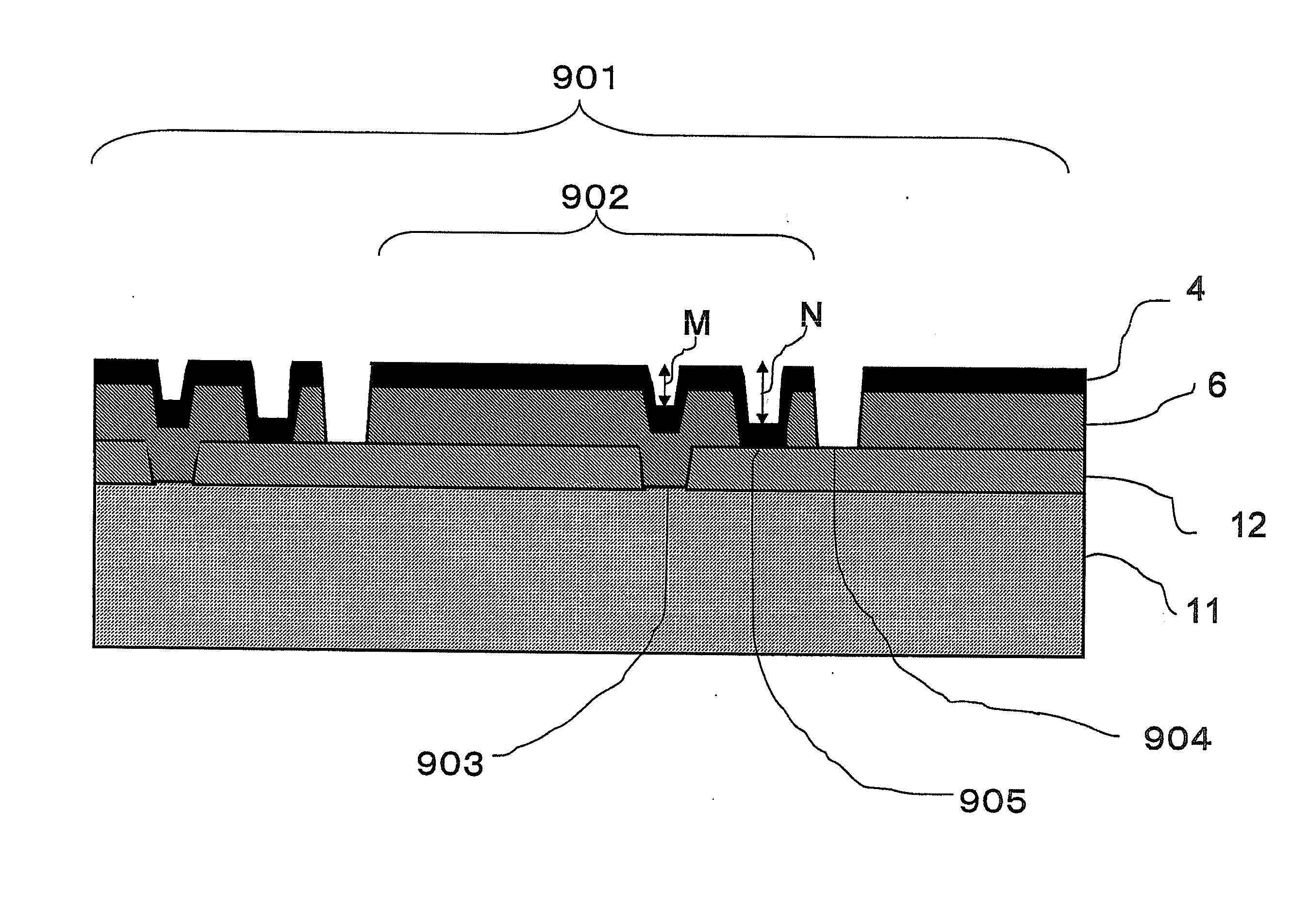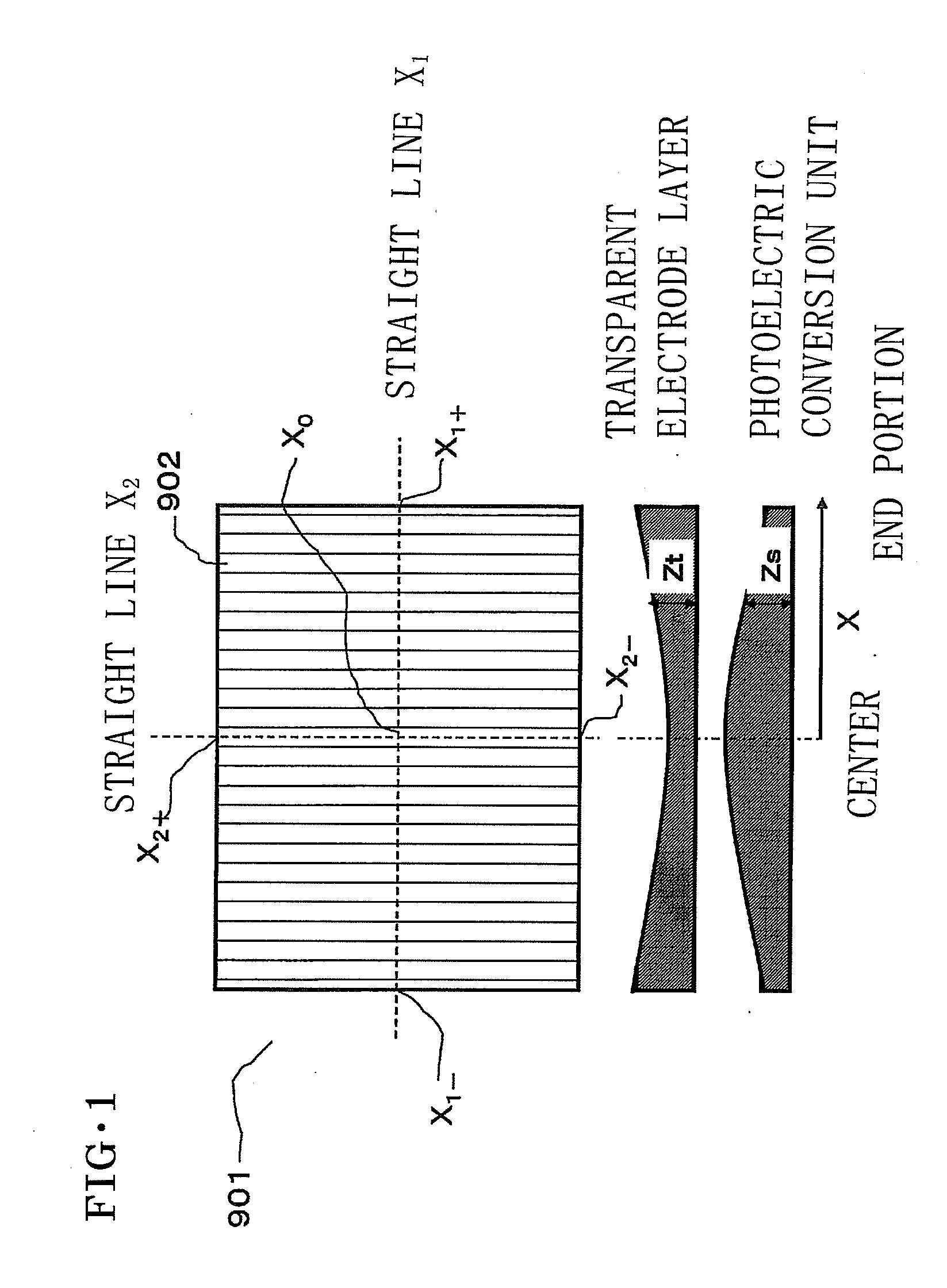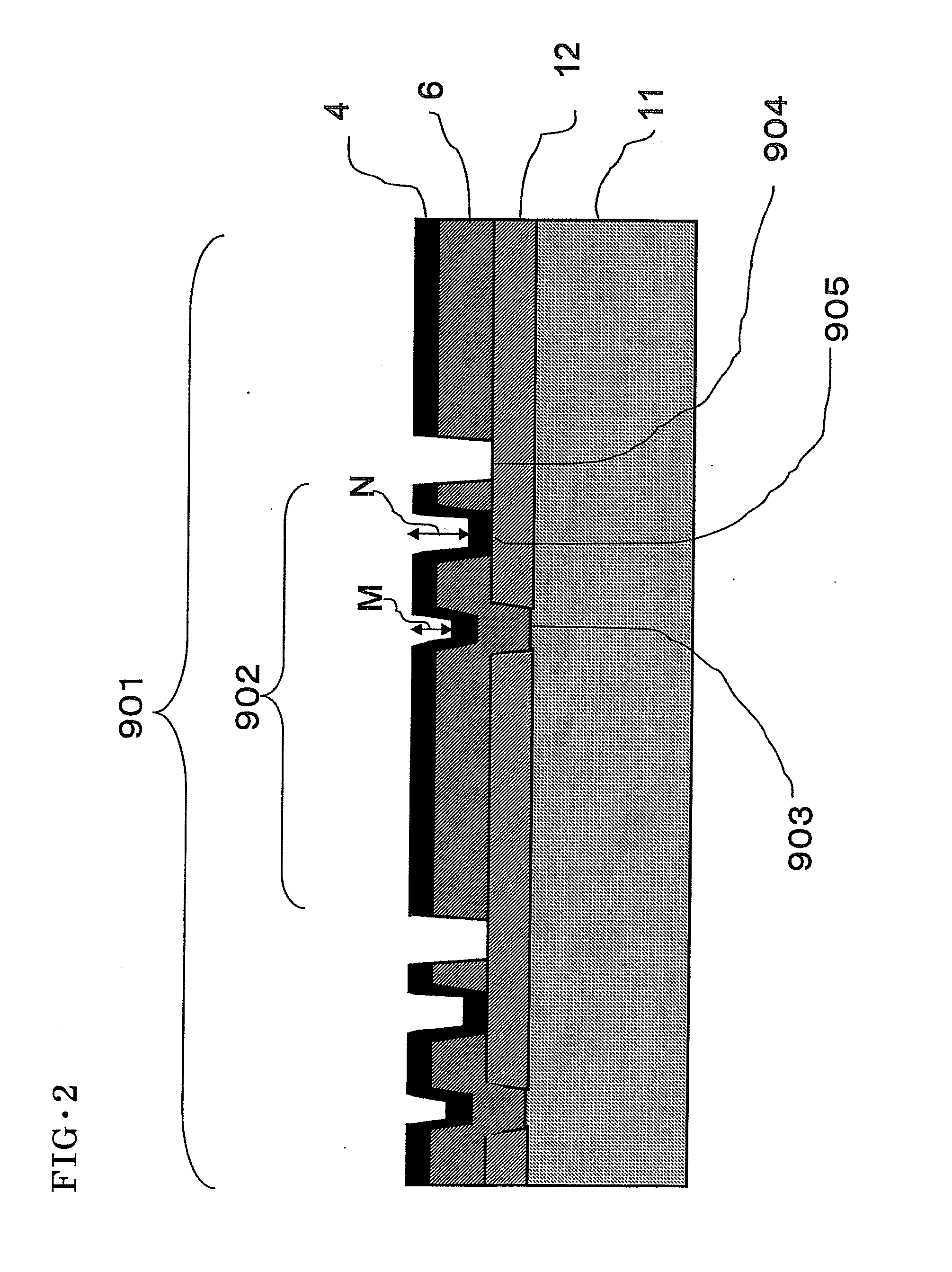Thin film photoelectric conversion device and method for manufacturing the same
- Summary
- Abstract
- Description
- Claims
- Application Information
AI Technical Summary
Benefits of technology
Problems solved by technology
Method used
Image
Examples
reference example 1
[0149]As Reference Example 1, a thin film photoelectric conversion device 1 was produced. Specifically, on the transparent substrate 1 as a glass substrate of 125×125 mm and 4 mm in thickness, the transparent electrode layer 12 made of ZnO was formed by a low-pressure thermal CVD method. Heaters of low-pressure CVD device used are arranged as shown in FIG. 5, W0 is 600 mm, and L0 is 500 mm. The substrate was placed on the heater H6 at the center, and the transparent electrode layer 12 was formed. This transparent electrode layer 12 was formed with substrate temperatures T1 to T6 being 150° C., a pressure being 30 Pa, a flow rate of evaporated diethyl zinc being 200 sccm, a flow rate of evaporated water being 700 sccm, a flow rate of diborane (B2H6) being 2 sccm, and a flow rate of hydrogen being 1000 sccm. An average of film thicknesses Zt of the transparent electrode layer was 1661 nm, a deviation of the film thickness was ±3.9%, and a distribution thereof was uniform. Further, a h...
reference example 2
[0150]As Reference Example 2, the substrate 1 for a thin film photoelectric conversion device was produced in a similar manner as in Reference Example 1. However, the difference from Reference Example 1 is that film formation time was adjusted longer in order to change a film thickness. An average of film thicknesses Zt of this transparent electrode layer was 1837 nm, and a haze ratio was 33.0%.
reference example 3
[0151]As Reference Example 3, the substrate 1 for a thin film photoelectric conversion device was produced in a similar manner as in Reference Example 1. However, the difference from Reference Example 1 is that film formation time was adjusted longer than in Reference Example 2 in order to change a film thickness. An average of film thicknesses Zt of this transparent electrode layer was 1907 nm, and a haze ratio was 35.4%.
PUM
| Property | Measurement | Unit |
|---|---|---|
| Area | aaaaa | aaaaa |
| Fraction | aaaaa | aaaaa |
| Current density | aaaaa | aaaaa |
Abstract
Description
Claims
Application Information
 Login to View More
Login to View More - R&D
- Intellectual Property
- Life Sciences
- Materials
- Tech Scout
- Unparalleled Data Quality
- Higher Quality Content
- 60% Fewer Hallucinations
Browse by: Latest US Patents, China's latest patents, Technical Efficacy Thesaurus, Application Domain, Technology Topic, Popular Technical Reports.
© 2025 PatSnap. All rights reserved.Legal|Privacy policy|Modern Slavery Act Transparency Statement|Sitemap|About US| Contact US: help@patsnap.com



